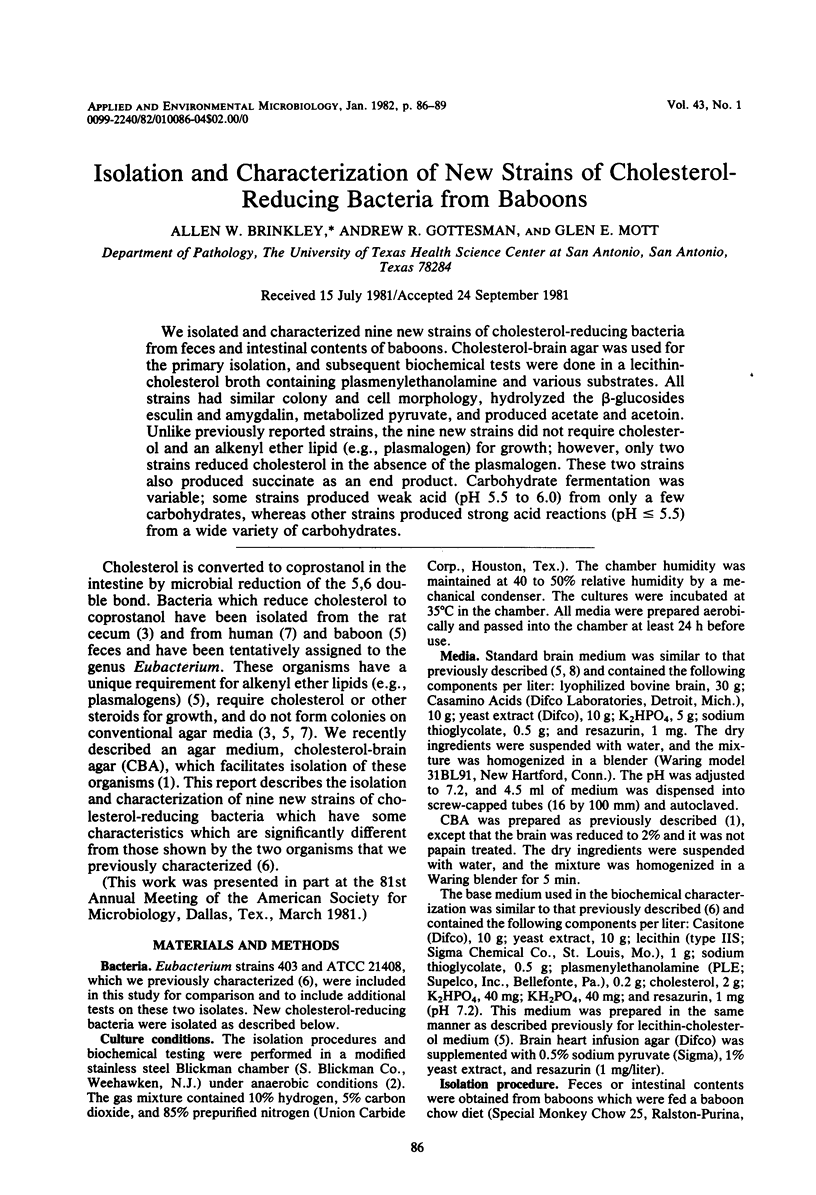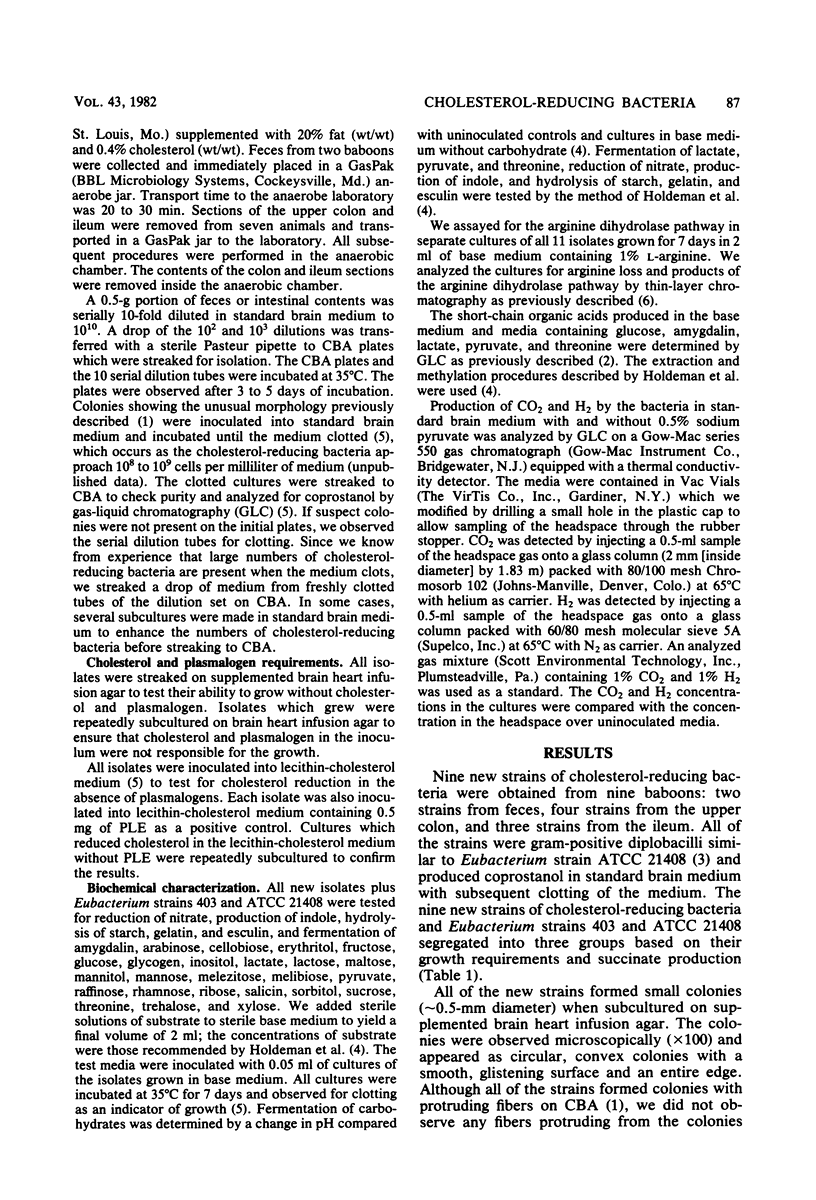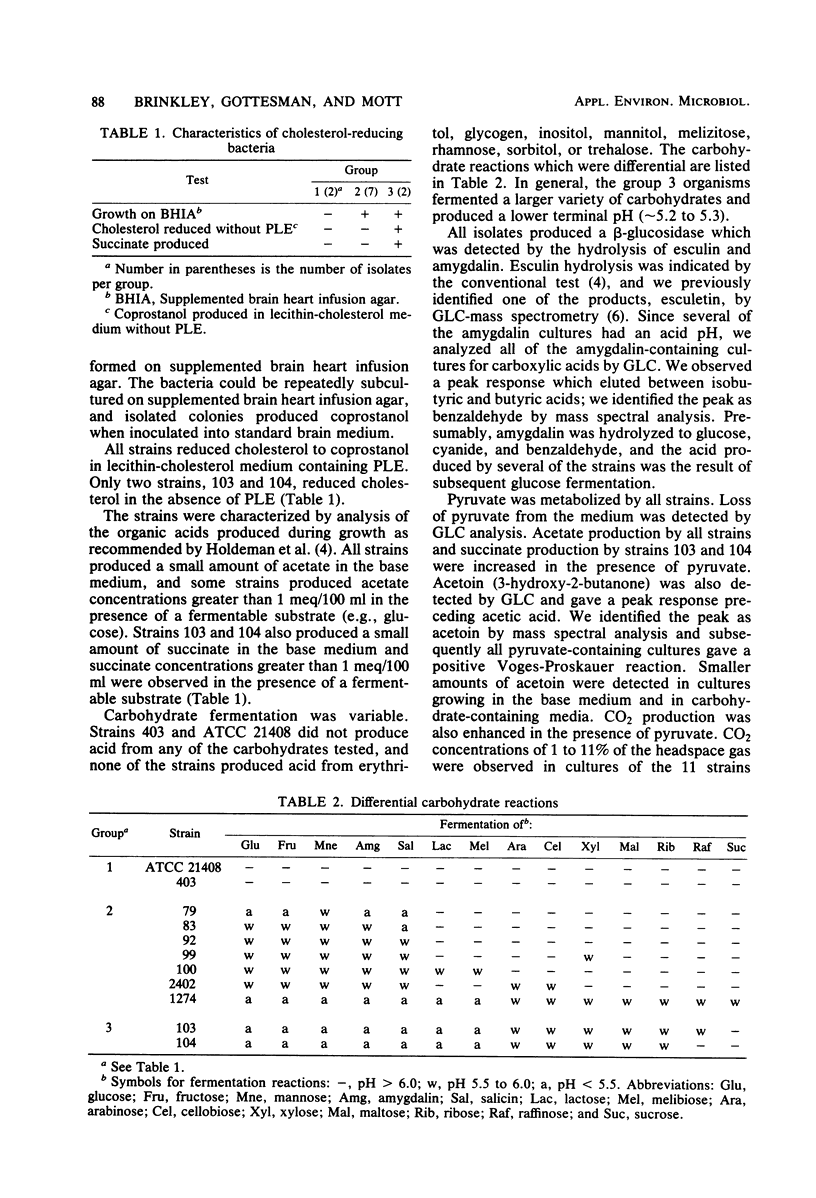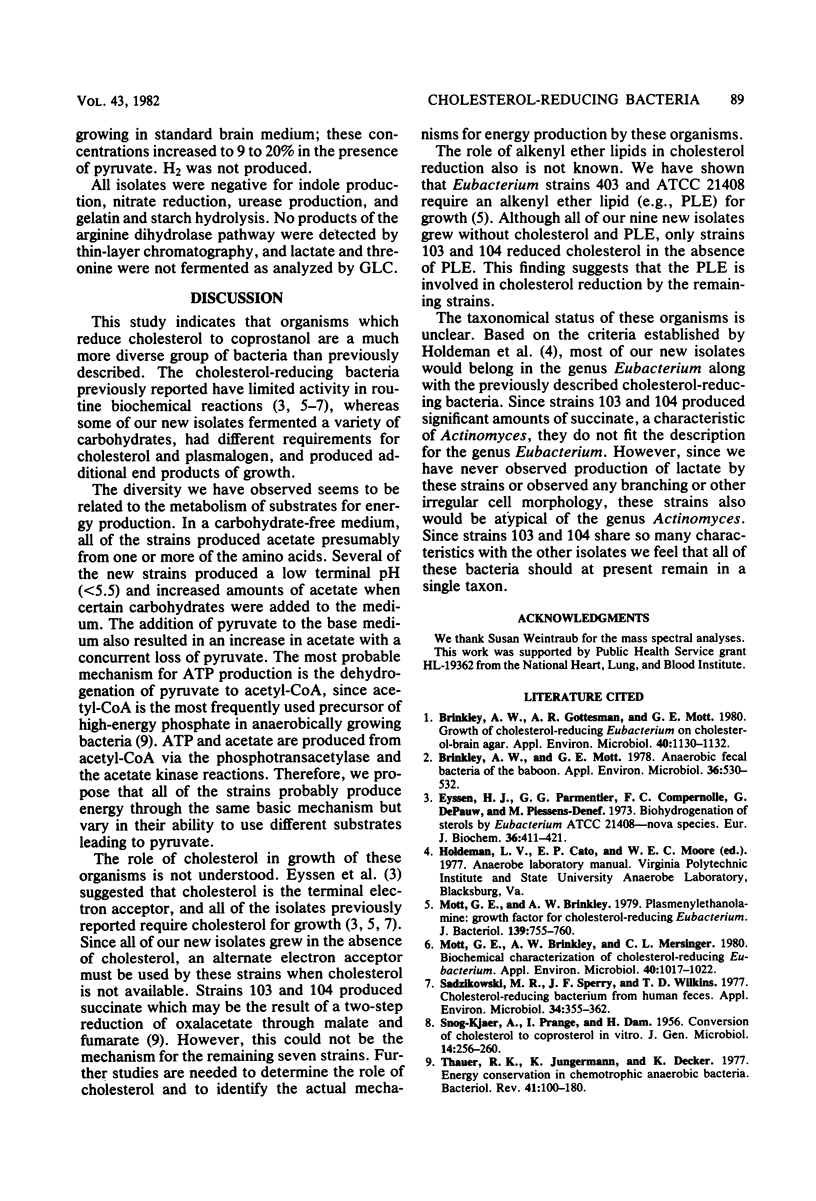Abstract
We isolated and characterized nine new strains of cholesterol-reducing bacteria from feces and intestinal contents of baboons. Cholesterol-brain agar was used for the primary isolation, and subsequent biochemical tests were done in a lecithin-cholesterol broth containing plasmenylethanolamine and various substrates. All strains had similar colony and cell morphology, hydrolyzed the beta-glucosides esculin and amygdalin, metabolized pyruvate, and produced acetate and acetoin. Unlike previously reported strains, the nine new strains did not require cholesterol and an alkenyl ether lipid (e.g., plasmalogen) for growth; however, only two strains reduced cholesterol in the absence of the plasmalogen. These two strains also produced succinate as an end product. Carbohydrate fermentation was variable; some strains produced weak acid (pH 5.5 to 6.0) from only a few carbohydrates, whereas other strains produced strong acid reactions (pH less than or equal to 5.5) from a wide variety of carbohydrates.
Full text
PDF



Selected References
These references are in PubMed. This may not be the complete list of references from this article.
- Brinkley A. W., Gottesman A. R., Mott G. E. Growth of cholesterol-reducing Eubacterium on cholesterol-brain agar. Appl Environ Microbiol. 1980 Dec;40(6):1130–1132. doi: 10.1128/aem.40.6.1130-1132.1980. [DOI] [PMC free article] [PubMed] [Google Scholar]
- Brinkley A. W., Mott G. E. Anaerobic fecal bacteria of the baboon. Appl Environ Microbiol. 1978 Sep;36(3):530–532. doi: 10.1128/aem.36.3.530-532.1978. [DOI] [PMC free article] [PubMed] [Google Scholar]
- Eyssen H. J., Parmentier G. G., Compernolle F. C., De Pauw G., Piessens-Denef M. Biohydrogenation of sterols by Eubacterium ATCC 21,408--Nova species. Eur J Biochem. 1973 Jul 16;36(2):411–421. doi: 10.1111/j.1432-1033.1973.tb02926.x. [DOI] [PubMed] [Google Scholar]
- Mott G. E., Brinkley A. W., Mersinger C. L. Biochemical characterization of cholesterol-reducing Eubacterium. Appl Environ Microbiol. 1980 Dec;40(6):1017–1022. doi: 10.1128/aem.40.6.1017-1022.1980. [DOI] [PMC free article] [PubMed] [Google Scholar]
- Mott G. E., Brinkley A. W. Plasmenylethanolamine: growth factor for cholesterol-reducing Eubacterium. J Bacteriol. 1979 Sep;139(3):755–760. doi: 10.1128/jb.139.3.755-760.1979. [DOI] [PMC free article] [PubMed] [Google Scholar]
- SNOG-KJAER A., PRANGE I., DAM H. Conversion of cholesterol into coprosterol by bacteria in vitro. J Gen Microbiol. 1956 Apr;14(2):256–260. doi: 10.1099/00221287-14-2-256. [DOI] [PubMed] [Google Scholar]
- Sadzikowski M. R., Sperry J. F., Wilkins T. D. Cholesterol-reducing bacterium from human feces. Appl Environ Microbiol. 1977 Oct;34(4):355–362. doi: 10.1128/aem.34.4.355-362.1977. [DOI] [PMC free article] [PubMed] [Google Scholar]
- Thauer R. K., Jungermann K., Decker K. Energy conservation in chemotrophic anaerobic bacteria. Bacteriol Rev. 1977 Mar;41(1):100–180. doi: 10.1128/br.41.1.100-180.1977. [DOI] [PMC free article] [PubMed] [Google Scholar]


